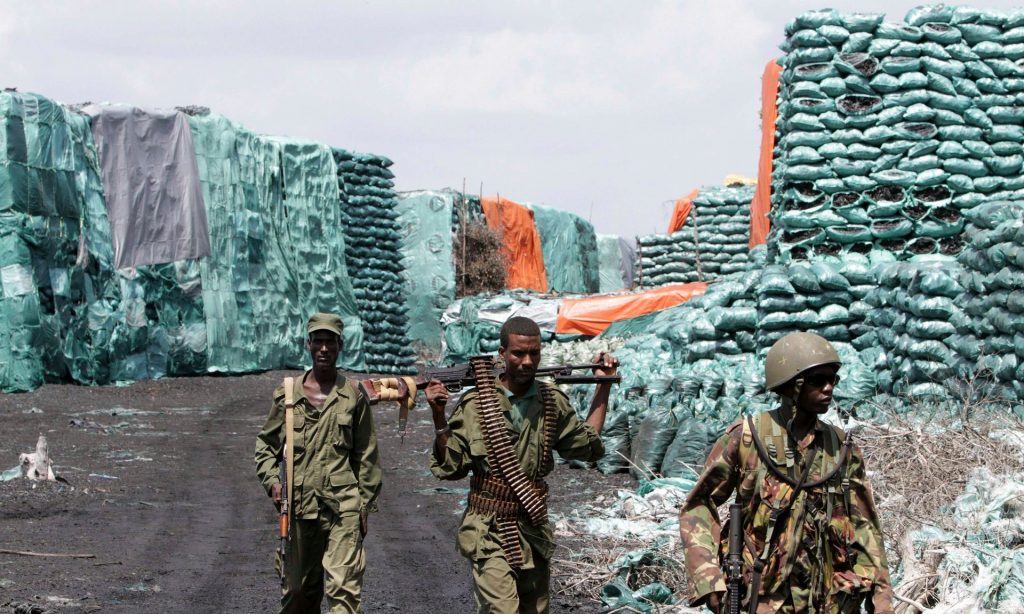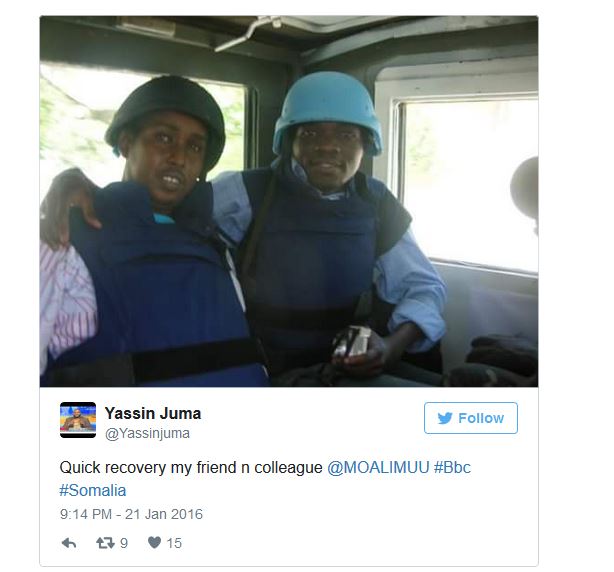On a cold January evening, journalist Yassin Juma was walking to his local pharmacy when he was stopped by four men from the Kenyan police.
They escorted him back to his house, where he found 14 people ransacking the place in front of his wife and children. “They were looking for electronics, for laptops,” Juma recalls.
A veteran investigative journalist known for his reports on the war against al-Shabaab, the Somalia-based Islamist militant group, Juma was arrested for posting information about a recent attack on the Kenyan Defence Forces (KDF) on his social media accounts.
On the 18 January, he revealed on Facebook and Twitter that a credible source within the KDF had confirmed to him that 103 soldiers had been killed in an attack on the Kenyan army base in El Adde just three days before.
But the KDF denied his report, and Joseph Nkaissery, the cabinet secretary for the interior and a retired general, made a public announcement warning that anyone who circulated information about the attack would be arrested for being “sympathetic to al-Shabaab”.
The basis for this threat was section 29 of the information and communication act, which prohibits the “improper use of a licensed communications system” and which activists say has increasingly been used by the Kenyan authorities to prohibit the publication and circulation of online information.
Juma was charged for the “misuse of a telecommunication gadget”, with police making clear they were particularly unhappy that he had shared a Facebook post by the brother of a dead Kenyan-Somali soldier “without the permission of the KDF”.
On the 19 January, blogger Eddy Reuben Ilah was also arrested and charged under section 29 for sharing images of KDF soldiers killed in El Adde on WhatsApp.
Unconstitutional
For many Kenyan journalists like Juma, who has 19,000 Facebook followers, social media has become a key instrument in their reporting arsenal, allowing them to bypass traditional outlets and connect directly with readers.
During the El Adde attacks, Juma says “the public was anxious to know what was going on”, yet mainstream media channels were not covering the incident. “Social media gave me an opportunity to give information to the families and the public.”
The Kenyan government has denied that it is seeking to intimidate or silence journalists. Interior secretary Nkaissery told the current affairs website African Arguments that the government respects independent media and freedom of expression, though added that this “freedom must be enjoyed in a responsible manner”.
But after several major terror attacks by al-Shabaab, Kenya’s efforts to combat the security threat has, according to Human Rights Watch, been “marred by ongoing patterns of serious human rights violations by Kenyan security forces, including extra-judicial killings, arbitrary detentions and torture.”
Henry Maina, a director for free speech at the Kenya-based NGO Article 19, says that his organisation has documented a sharp rise in the threats and attacks on journalists.
From January to September 2015, the NGO recorded 65 individual cases were journalists and social media users were threatened with either physical violence, threats by phone and text, summons by police or and legal restrictions. Of these incidents, 22 cases related to journalists covering corruption, 12 to protests, and eight to terrorism and crime stories.
Maina adds that only three of the 42 cases have been investigated and the perpetrators taken to court. That’s a 7% rate, which he said, is “an unacceptably high level of impunity regarding attacks on journalists.”
But in April, after widespread international criticism of section 29, the Kenyan High Court did finally rule that that it was in fact unconstitutional.
“A number of bloggers and social media communicators who were facing charges under the impugned section have had those charges dropped and where there was no other evidence to enable the prosecution to charge them with other offences they have been acquitted,” Mains says.
“Given our legal system, all similar cases will be dropped when they are next scheduled for hearing. No new cases of bloggers and journalists charged under section 29 have been recorded.”
But ruling came too late in the year for Juma, whose experience at the hands of the police have left their mark. From his home that January evening, he was taken to Muthaiga police station, where he was questioned about his reporting.
“They had my phone, they wanted to know my contacts in Somalia,” he said. He was held for two days, before an officer came into his cell and announced: “There’s been a change of plans.” Shortly after, he was released without charge.
Fearing his reports may once again anger the authorities, Juma has since taken his family and gone into hiding. “This is the first call I am making,” he says from his self-imposed exile. “We’ve gone underground.”
This is an edited extract from the forthcoming 250th issue of Index on Censorship magazine, focusing on the risks facing reporters around the world


